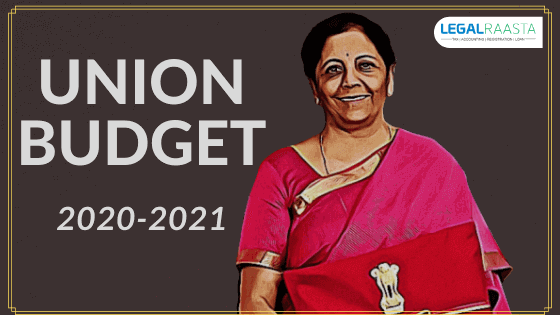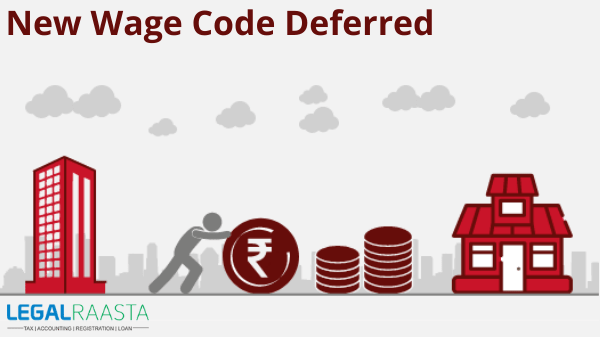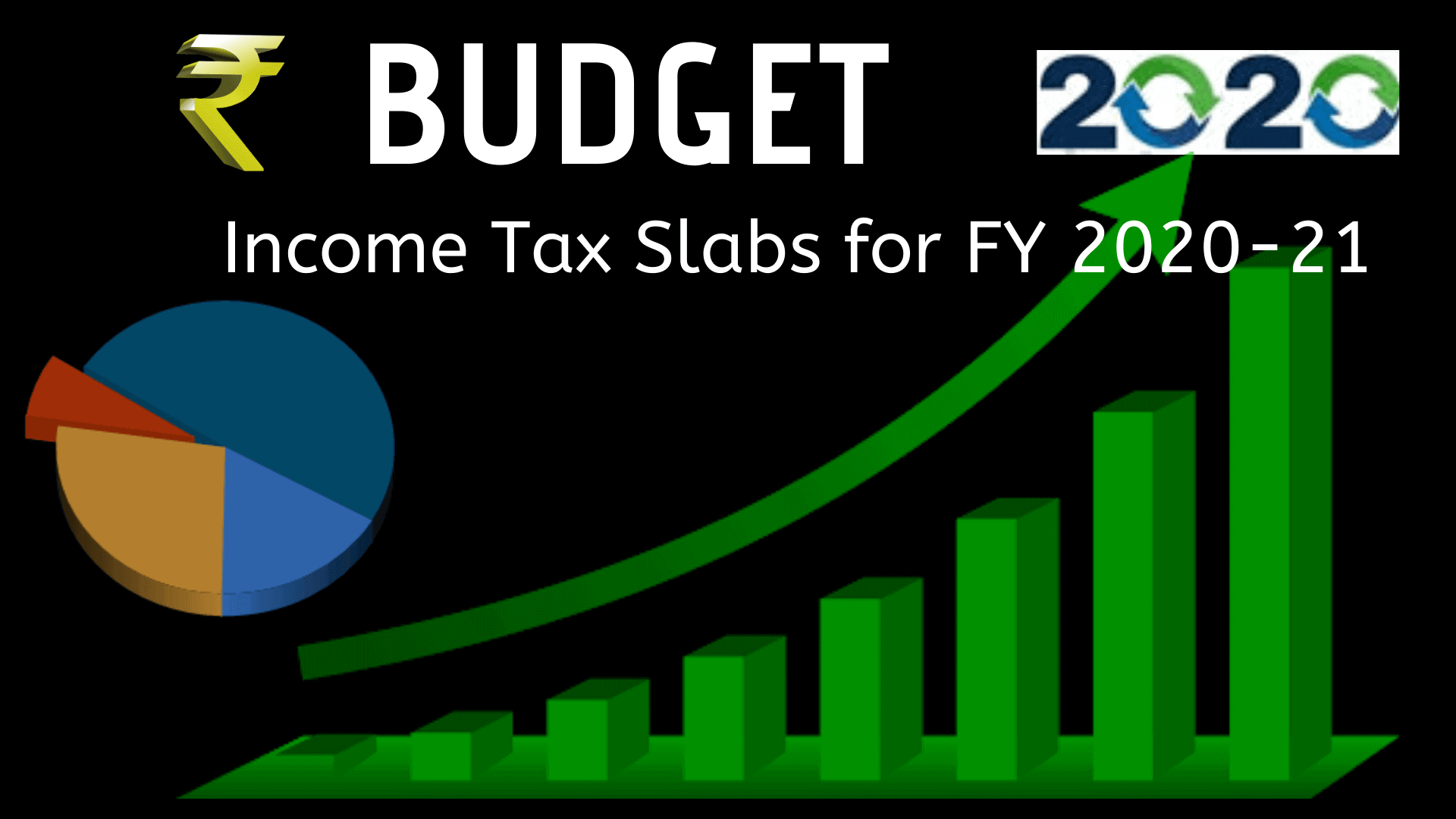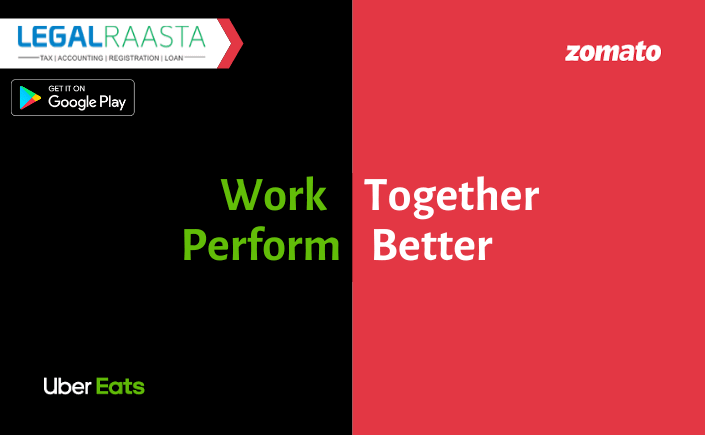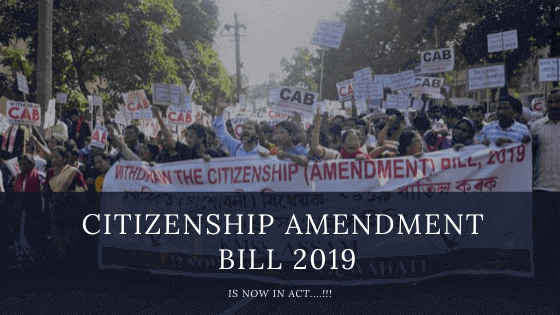Key Highlights of Union Budget 2020-21
Introducing the first union budget 2020 of the 3rd decade of the 21st century, Finance Minister Smt. Nirmala Sitharaman revealed a series of far-reaching reforms, pointed at fortifying the Indian economy by a succession of short-term, medium-term, and long-term projects. This year the union budget is themed as " Ease of Living ".
The Finance Minister Smt. Nirmala Sitharaman said that the Union Budget 2020 aims:
- To accomplish seamless delivery of services by Digital governance
- To enhance the physical quality of life by the National Infrastructure Pipeline
- Risk mitigation by Disaster Resilience
- Social security by Pension and Insurance penetration.
- Aspirational India in which all parts of the society ask better standards of living, with access to health, education and safer jobs.
- Economic development for all, shown in the Prime Minister’s exhortation of “SabkaSaath, SabkaVikas, SabkaVishwas”.
- Caring Society that is both kind and compassionate, where Antyodaya is a portion of faith.
- Agriculture, Irrigation, and Rural Development
- Wellness, Water, and Sanitation
- Education and Skills
The Key Highlights of Union Budget 2020-21 are as follows:
Agriculture, Irrigation and Rural Development
The Finance Minister said that more than Rs 2.83 lakh crore will be used on Agriculture, Rural Development, Irrigation and allied activities as farmers and rural poor remain to remain the key center of the Government. Restating the promise of doubling farmers’ income by 2022, She said, Government has already given resilience for 6.11 crore farmers protected under PM Fasal Bima Yojana. Agriculture credit target for the year 2020-21 has been set at Rs 15 lakh crore. All qualified recipients of PM-KISAN will be included under the KCC scheme. Furthermore, general measures for one hundred water-stressed districts, plan to build PM-KUSUM to provide 20 lakh farmers for setting up stand-alone solar pumps and for another 15 lakh farmers to solarise their grid-connected pump sets, establishing up of suitable warehouses at the block/taluk level and in Horticulture sector with center on “one product one district” for more helpful marketing and export are few of the steps in that direction. Foot and Mouth disease, brucellosis in cattle and also peste des petits ruminants(PPR) in sheep and goat to be reduced by 2025, Coverage of artificial insemination to be raised from the present 30% to 70%, MNREGS to be linked to increasing fodder farms, doubling of milk processing capacity from 53.5 million MT to 108 million MT by 2025 to be promoted. So on the Blue Economy, the building of fish production to 200 lakh tonnes is introduced by 2022-23. Youth to be included in fishery extension by 3477 Sagar Mitras and 500 Fish Farmer Producer Organisations. Fishery exports expected to be increased to Rs 1 lakh crore by 2024-25. DeenDayalAntyodayaYojana- for the alleviation of poverty, half a crore households are prepared with 58 lakh SHGs and it will be further developed.Wellness, Water and Sanitation
- Rs. 69,000 crore earmarked for the overall Healthcare sector.
- Rs. 6400 crore (out of Rs. 69,000 crores) for PM Jan Arogya Yojana (PMJAY):
-
- More enhanced than 20,000 hospitals already impaneled under PM Jan Arogya Yojana (PMJAY).
- Viability Gap Funding window intended for setting up hospitals in the PPP model.
- Aspirational Districts with no Ayushman impaneled hospitals to be included in the initial stage.
- Targeting diseases with a properly planned defensive regime using Machine Learning and AI.
- Jan Aushadhi Kendra Scheme to give 2000 medicines and 300 surgical in every district by 2024.
- TB Harega Desh Jeetega campaign started - a promise to end Tuberculosis by 2025.
- Rs. 3.60 lakh crore recommended for Jal Jeevan Mission:
- Rs. 11,500 crore for the year 2020-21.
- Growing local water sources, recharging existing sources, and encouraging water harvesting and desalination.
- Cities with a million-plus population to be supported to complete the goal during the current year itself.
- About Rs.12, 300 crores put up in for Swachh Bharat Mission in 2020-21:
- Commitment to ODF-Plus in order to support ODF behavior.
- Stress on liquid and greywater management.
Education and Skills
- Rs. 99,300 crore for the education sector and Rs. 3000 crore for skill improvement in 2020-21.
- New Education Policy to be published soon.
- National Police University and National Forensic Science University designed for watching science, forensic science, and cyber-forensics.
- Grade level full-fledged online education program by Top-100 institutions in the National Institutional Ranking Framework.
- Up to 1-year internship to fresh engineers to be given by Urban Local Bodies.
- The budget aims to join a medical college to an existing district hospital in PPP mode.
- Special bridge courses to be created by the Ministries of Health, and Skill Development:
-
- To meet the demand for teachers, nurses, para-medical staff and caregivers abroad.
- To serve in equivalence in the work sets of the workforce and employers’ standards.
- 150 higher educational institutions to begin apprenticeship set degree/diploma courses by March 2021.
- External Commercial Borrowings and FDI to be allowed for the education sector.
- Ind-SAT proposed for Asian and African countries as a portion of the Study in India program.
Economic Development
Industry, Commerce, and Investment- Rs. 27,300 crore earmarked for 2020-21 for growth and promotion of Industry and Commerce.
- Investment Clearance Cell meant to be set up
- To give “end to end” facilitation and assistance.
- To work by a portal.
- 5 new smart cities meant to be developed.
- Scheme to help manufacture mobile phones, electronic equipment and semi-conductor packaging offered.
- National Technical Textiles Mission to be set up:
- With four-year implementation period from 2020-21 to 2023-24.
- At an estimated outlay of Rs 1480 crore.
- To position India as a global leader in Technical Textiles.
- New scheme NIRVIK to be launched to achieve higher export credit disbursement, which provides for:
- More high-priced insurance coverage
- The decrease in premium for small exporters
- Simplified process for claim settlements.
- Turnover of Government e-Marketplace (GeM) intended to be taken to Rs 3 lakh crore.
- Scheme for Revision of duties and taxes on exported products to be started.
- Exporters to be digitally refunded duties and taxes imposed at the Central, State and local levels, which are different not exempted or refunded.
- All Ministries to assign quality standard orders as per PM’s idea of “Zero Defect-Zero Effect” manufacturing.
Infrastructure
- Rs.100 lakh crore to be spent in infrastructure over the next 5 years.
- National Infrastructure Pipeline:
- Rs. 103 lakh crore worth projects started on 31st December 2019.
- More than 6500 projects over sectors, to be listed as per their size and stage of growth.
- A National Logistics Policy to be published soon:
- National Skill Development Agency to provide a special drive to infrastructure-focused skill development opportunities.
- Project preparation tools for infrastructure projects offered.
- Infrastructure agencies of the government to include youth-power in start-ups.
- Rs.1.7 lakh crore intended for transport infrastructure in 2020-21.
Highways:
- Accelerated development of highways to be tackled, including:
- 2500 Km of way control highways.
- 9000 Km of economic corridors.
- 2000 Km of coastal and land port roads.
- 2000 Km of strategic highways.
- Delhi-Mumbai Expressway and 2 other packages to be constructed by 2023.
- Chennai-Bengaluru Expressway to be incited.
- Moved to monetize at least 12 lots of highway bundles of above 6000 Km before 2024.
Indian Railways:
- 5 measures:
- Large solar power capacity to be set up beside rail tracks, on land owned by railways.
- 4 station re-development projects and operation of 150 passenger trains by PPP.
- More Tejas type trains to join iconic tourist destinations.
- High-speed train connecting Mumbai and Ahmedabad to be actively tracked.
- 148 km long Bengaluru Suburban transport plan at a cost of Rs 18600 crore, to have fared on the metro model. Central Government to give 20% of equity and help external support up to 60% of the project cost.
- Indian Railways’ performances:
- 550 Wi-fi facilities commissioned in several stations.
- Zero unmanned crossings.
- 27000 Km of tracks to be electrified.
Ports & Water-ways:
- Corporatizing at least one main port and its listing on stock exchanges to be held.
- Governance framework consistency with global benchmarks required for more effective sea-ports.
- Economic activity along river banks to be energized as per Prime Minister’s Arth Ganga thought.
Airports:
- 100 more airports to be produced by 2024 to promote the Udaan scheme.
- Air fleet numbers required to go up from present 600 to 1200 during this time.
Electricity:
- “Smart” metering to be promoted.
- More steps to reform DISCOMs to be taken.
Power:
- Rs.22, 000 crores intended for power and renewable energy sector in 2020-21.
- Development of national gas grid from the present 16200 km to 27000 km offered.
- Further changes to promote transparent price discovery and ease of transactions.
- To take benefit of new technologies:
- Policy to allow the private sector to create Data Centre parks during the country to be carried out soon.
- Fiber to the Home (FTTH) connections by Bharatnet to link 100,000-gram panchayats this year.
- Rs.6000 crore intended for the Bharatnet program in 2020-21.
- Proposals to benefit Start-ups:
- A digital platform to be developed to help seamless application and capture of IPRs.
- Knowledge Translation Clusters to be set up over several technology sectors including current and developing areas.
- For designing, fabrication, and validation of proof of idea, and further scaling up Technology Clusters, harboring testbeds and small scale manufacturing plants to be built.
- Mapping of India’s genetic landscape- Two new national level Science Schemes to be opened to form a comprehensive database.
- Early life funding offered, including a seed fund to encourage ideation and growth of early-stage Start-ups.
- Rs.8000 crore offered over 5 years for National Mission on Quantum Technologies and Applications.
Caring Society
Focusing on Women & Child, Social Welfare and Culture and Tourism.- Putting of Rs. 35,600 crore for nutrition-related programs introduced for the FY2020-21.
- Rs.28, 600 crores meant for women-specific programs.
- The issue about the age of a girl entering motherhood - advised appointing a task force to grant its support in 6 months.
- Financial support for full acceptance of technologies, recognized by the Ministry of Housing and Urban Affairs to assure no manual washing of sewer systems or septic tanks, to be given.
- Rs. 85, 000 crores intended for 2020-21 for the welfare of Scheduled Castes and Other Backward Classes.
- Rs. 53, 700 crores given to additional development and welfare of Scheduled Tribes.
- Enhanced allocation of Rs. 9,500 crore given for 2020-21 for senior citizens and Divyang.
Culture & Tourism
- Putting of Rs. 2500 crore for 2020-21 for tourism promotion.
- Rs.3150 crore intended for the Ministry of Culture for 2020-21.
- An Indian Institute of Heritage and Conservation under Ministry of Culture offered with the status of a deemed University.
- 5 archaeological sites to be developed as iconic sites. With on-site Museums Rakhigarhi (Haryana), Hastinapur (Uttar Pradesh), Shivsagar (Assam), Dholavira (Gujarat), Adichanallur (Tamil Nadu)
- Re-curation of the Indian Museum in Kolkata, stated by Prime Minister in January 2020.
- Museum on Numismatics and Trade to be placed in the historic Old Mint building in Kolkata.
- 4 more museums from over the country to be held up for renovation and re-curation.
- Assistance for setting up of a Tribal Museum in Ranchi (Jharkhand).
- Maritime Museum to be fixed up at Lothal- the Harrapan age maritime site near Ahmedabad, by the Ministry of Shipping.
- State governments planning to design a roadmap for some known destinations. And express financial plans during 2021 upon which defined grants to be made available to the States in 2020-21.
Environment & Climate Change
- Allocation for this idea to be Rs.4400 crore for 2020-21.
- Recommended advising the utilities to close the running old thermal power plants with carbon emission over the pre-set norms.
- States that are forming and executing plans for assuring cleaner air in cities over one million to be supported.
- PM launched the Coalition for Disaster Resilient Infrastructure (CDRI) with Secretariat in Delhi. Second such international action after International Solar Alliance.
Governance
- Clear and clean, corruption-free, policy-driven, good in purpose and most importantly believing in belief.
- Taxpayer Charter to be blessed in the Statute will bring fairness and effectiveness in tax administration.
- Companies Act to be amended to create into statues, criminal liability for some civil acts.
- Other laws with such terms are to be corrected after the examination.
- Significant reforms in recruitment to Non-Gazetted posts in Government and Public sector banks:
- An independent, professional and specialist National Recruitment Agency (NRA) for managing a computer-based online Common Eligibility Test for recruitment.
- A test-center in all districts, especially in the Aspirational Districts.
- A robust mechanism to be grown for appointment including direct recruitment to different Tribunals and specialized bodies to bring the best talents and professional experts.
- Contract Act to be extended.
- New National Policy on Official Statistics to:
- Promote the use of the most advanced technologies including AI software.
- Lay down a road-map towards revived data collection, integrated data portal and timely distribution of information.
- A sum of Rs. 100 crore allotted to start the preparations for the G20 presidency to be hosted in India in the year 2022.
- Development of North East region:
- The increased flow of funds using the online portal by the Government.
- Greater access to the financial support of Multilateral and Bilateral funding agencies.
- Extension of Union Territories of J&K and Ladakh:
- An amount of Rs. 30,757 crore given for the financial year 2020-21.
- The Union Territory of Ladakh has been given with Rs. 5,958.
Financial Sector
- Reforms achieved in PSBs :
- 10 banks consolidated into 4.
- Rs. 3,50,000 crore capital infused.
- Governance reforms to be brought out to bring in clarity and greater professionalism in PSBs.
- Few PSBs to be inspired to address the capital market to raise additional capital
- Deposit Insurance and Credit Guarantee Corporation (DICGC) allowed to build Deposit Insurance Coverage to Rs. 5 lakh from Rs.1 lakh per depositor.
- Scheduled Commercial Bank’s health under monitoring by a robust mechanism, keeping depositors’ money safe.
- Cooperative Banks to be established by changing the Banking Regulation Act for:
- Enhancing professionalism.
- Facilitating access to capital.
- Enhancing governance and oversight for sound banking through the RBI.
- NBFCs eligibility limit for debt recovery decreased i.e :
- Rs. 500 crore - Rs 100 crore asset size.
- Rs 1 crore - Rs 50 lakh loan size.
- Private capital in the Banking system: The government to sell its balance holding in IDBI Bank to private, retail and institutional investors buy the stock exchange.
- Simpler mobility in jobs:
- Auto-enrolment in Universal Pension coverage.
- Inter-operability mechanism to safeguard the accumulated corpus.
- Pension Fund Regulatory Development Authority of India Act to be changed to:
- Increase the regulating role of PFRDAI.
- Promote separation of NPS trust for government employees from PFRDAI.
- Facilitate the establishment of a Pension Trust by the employees other than Government.
- Factor Regulation Act 2011 to be changed to:
- Authorize NBFCs to increase invoice financing to the MSMEs through TReDS
- New scheme to give subordinated debt for entrepreneurs of MSMEs by the banks
- Would be added as quasi-equity.
- It will be fully guaranteed by the Credit Guarantee Trust for Medium and Small Entrepreneurs (CGTMSE).
- The corpus of the CGTMSE will accordingly be increased by the government.
- The window for MSME’s debt restructuring by RBI to be increased by one year till March 31, 2021.
- More than 5 lakh MSMEs have already been served.
- An app-based invoice financing loan product for MSMEs to be originated.
- To stop the problem of delayed payments and significant cash flows mismatches.
- Export promotion of MSMEs:
- For the chosen sector such as pharmaceuticals, auto components, and others.
- Rs 1000 crore scheme secured by EXIM Bank together with SIDBI.
- Handholding guide for technology upgradations, R&D, business strategy, etc.
Financial Market
- Developing Bond Market.
- A few main parts of Government securities to be opened fully for non -resident investors also.
- The FPI limit in corporate bonds increased to 15% from 9% of its outstanding stock.
- New legislation to be made for laying down a mechanism for the web of financial contracts. The scope of credit failure exchanges to increase.
- Debt Based Exchange Traded Fund is to be processed and built by a new Debt-ETF consisting primarily of Government Securities.
- To provide an engaging way to retail investors, pension funds and long-term investors.
- A Partial Credit Guarantee Scheme for the NBFCs formed post the Union budget 2019-20 to address their liquidity constraints.
- New mechanism to be devised to further this.
- Government assistance to securities so drifted.
Infrastructure Financing
- Rs.103 lakh crore National Infrastructure Pipeline projects first announced.
- Rs 22,000 crore to provide equity support to Infrastructure Finance Companies such as IIFCL and a subsidiary of NIIF.
- IFSC, GIFT city: full of potential to grow a center of international finance and a center for high-end data processing:
Fiscal Management
- XV Finance Commission (FC):
- XV Finance Commission has provided its first report for FY2020-21
- Tips accepted in large measure
- Its final report for five years starting 2021-22 to be submitted during the latter part of the year.
- GST Compensation Fund:
- Balances due out of the collection of the years 2016-17 and 2017-18 to be given to the Fund, in 2 installments.
- Hereinafter, shifts to the fund to be restricted only to the collection by way of GST compensation cess.
- Overhaul of Centrally Sponsored Schemes and Central Sector Schemes required:
- To join them with developing social and economic demands of tomorrow
- To assure that scarce public resources are spent optimally
- On the recent debate over the clarity and credibility of projected fiscal numbers, it is confirmed that the method adopted is submissive with the FRBM Act.
- For the FY 2019-20:
- Revised Measures of Expenditure: at Rs.26.99 lakh crore
- Revised Calculations of Receipts: valued at Rs.19.32 lakh crore.
- For the year 2020-21:
- The nominal increase in GDP measured at 10%.
- Receipts: valued at Rs.22.46 lakh cr
- Expenditure: at Rs.30.42 lakh cr.
- Important tax reforms for increasing investments recently undertaken. But, expected tax happiness required to take time.
- Fiscal deficit of 3.8% expected in RE 2019-20 and 3.5% for BE 2020-21. It contains 2 parts :
- 3.3% for the year 2019-20 and 3% for the 2020-21 budget measure.
- Deviation of 0.5%, compatible with Section 4(3) of the FRBM Act, both for RE 2019-20 and BE 2020-21. (Section 4 (2) of the FRBM Act provides for an activate mechanism for a change from the expected fiscal deficit on account of structural improvements in the economy with unanticipated fiscal implications.)
- Return path, committing to the fiscal union without negotiating needs of investment out of public funds, is set in Medium Term Fiscal Policy cum Strategy Statement.
- Market borrowings: Net market borrowings: Rs.4.99 lakh crore in 2019-20 & Rs.5.36 lakh crore for 2020-21.
- A large part of the borrowings for the financial year 2020-21 to go towards Capital expenditure that has been sized up by higher than 21%.
ITR and Direct Tax
Direct Tax Proposals - To incite germination, simplify the tax structure, bring the comfort of compliance, and decrease litigations.-
Personal Income Tax:
| Taxable Income Slab (Rs.) | Existing tax rates | New tax rates |
|---|---|---|
| 0-2.5 Lakh | Exempt | Exempt |
| 2.5-5 Lakh | 5% | 5% |
| 5-7.5 Lakh | 20% | 10% |
| 7.5-10 Lakh | 20% | 15% |
| 10-12.5 Lakh | 30% | 20% |
| 12.5-15 Lakh | 30% | 25% |
| Above 15 Lakh | 30% | 30% |
-
Corporate Tax:
-
- The tax rate of 15% increased to new electricity production companies.
- Indian corporate tax rates are now considered the lowest in the world.
-
Dividend Distribution Tax (DDT):
-
- DDT removed giving India a more engaging investment stop.
- Deduction to be allotted for dividends received by the operating company from its subsidiary.
- Rs. 25,000 crore expected annual revenue is waived.
- Start-ups:
-
- Start-ups with turnover up to Rs. 100 crore to experience a 100% deduction for 3 continuous assessment years out of 10 years.
- Tax payment on ESOPs complied.
-
MSMEs to boost less-cash economy
-
Cooperatives:
-
- Parity made within cooperatives and the corporate sector.
- Choosing to cooperative societies to be charged at 22% + 10% surcharge and 4% cess with no exemption or deductions.
- Cooperative societies exempted from Alternate Minimum Tax (AMT) just like Companies are excused from the Minimum Alternate Tax (MAT).
- Tax concession for foreign investments: 100% tax exemption to the interest, dividend, and capital gains income on the investment made in infrastructure and priority sectors before 31st March 2024 with the least lock-in period of 3 years through the Sovereign Wealth Fund of foreign governments.
- Affordable housing:
-
- Extra deduction up to Rs. 1.5 lakhs for interest given on loans exercised for an affordable house increased till 31st March 2021.
- Date of approval of affordable housing projects for availing tax holiday on benefits earned by developers increased till 31st March 2021.
Tax Facilitation Patterns
-
Instant PAN
-
‘Vivad Se Vishwas’ scheme
-
- Waiver of interest and penalty - only disputed taxes to be paid for payments till 31st March 2020.
- Extra amount to be paid if availed after 31st March 2020.
- Advantages to taxpayers in whose cases appeals are pending at any level.
- Faceless claims to be approved by revising the Income Tax Act.
- For charity institutions:
-
- Pre-filling in return by the data of donations furnished
- Process of registration to be made fully electronic.
- Unique registration number (URN) to be assigned to all new and existing charity institutions.
- Provisional registration to be allotted for new charity institutions for 3 years.
- CBDT to choose a Taxpayers’ Charter.
- Losses of merged banks: Measures submitted to the Income-tax Act to assure that entities profit from unabsorbed losses and depreciation of the amalgamating entities.
Indirect Tax
-
GST:
- Reduced simple processing of GST return will be implemented from the 1st of April 2020.
- It will make return filing easy with traits like SMS based filing for nil return, return pre-filling, improved input tax credit flow, and overall simplification.
- Dynamic QR-code is designed for consumer invoices. GST parameters will be apprehended when payment for purchasing is done by the QR-code.
-
Customs Duties:
- Customs duty proposed on footwear to 35% from 25% & on furniture goods to 25% from 20%.
- Basic customs duty on imports of newsprint and light-weight coated paper decreased from 10% to 5%.
- Customs duty rates updated on electric vehicles and components of mobiles.
- 5% health cess to be taxed on the imports of medical devices, except those exempt from BCD.
- Lower customs duty on some inputs and raw materials like a fuse, chemicals, and plastics.
- Higher customs duty on some goods like auto-parts, chemicals, etc. which are also being produced domestically.
Marvelous Achievements of Indian Economy
- India now the 5th largest economy in the world.
- 7.4% average growth measured during 2014-19 with inflation averaging around 4.5%.
- 271 million people lifted out of poverty during the 2006-16.
- India’s Foreign Direct Investment boosted to US$ 284 billion while 2014-19 from US$ 190 billion in 2009-14.
- Central Government debt decreased to 48.7% of GDP (March 2019) from 52.2% (March 2014).
- Two cross-cutting developments:
-
- The increase in technologies (Analytics, Machine Learning, robotics, Bio-informatics, and Artificial Intelligence).
- The highest ever amount of people in the productive age group (15-65 years) in India.
- GST eliminated many bottlenecks in the system.
Future Aim for supporting India’s unique global leadership, driven by Digital Revolution
- Seamless delivery of services by Digital Governance.
- Change in physical quality of life by the National Infrastructure Pipeline.
- Risk mitigation by Disaster Resilience.
- Social security by Pension and Insurance penetration.
Related articles Latest Update on income tax slab rate 2020

